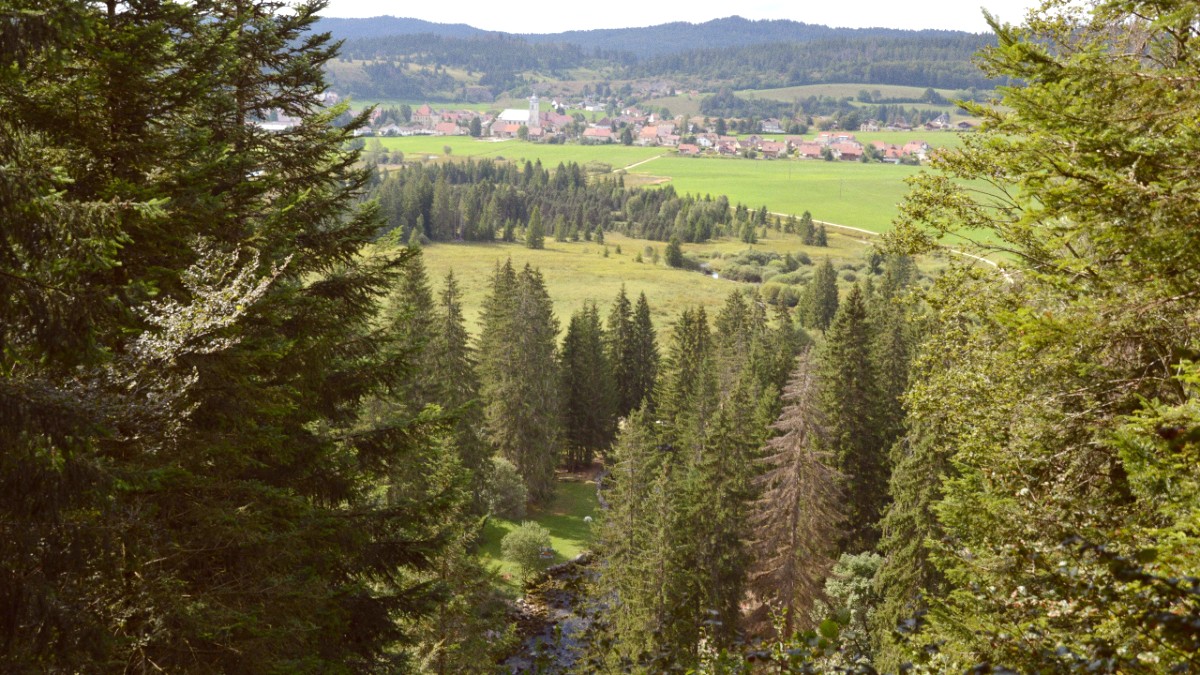
The Jura, France
From the commanding heights of the Citadelle, an UNESCO World Heritage site, the city unfolds beneath you like a living map, revealing its past and present in one breathtaking panorama. Besançon invites you to step away from the hurried pace of modern life. Here, you connect with a destination that values its heritage, its craft, and its unique relationship with the land. The air carries a sense of calm, mixed with the quiet hum of an university town. Every turn presents a new perspective, whether it is the intricate details of a Roman arch, the precision of a historical timepiece, or the welcoming smile of a local shopkeeper. Prepare to discover a genuine piece of France, where history whispers from every stone and natural beauty surrounds you.
Besançon is famed for its location within a large meander of the Doubs River, creating a natural loop that nearly encircles the historic city center. This geographical trait offered defensive strength through the ages and provides stunning scenic views today.
The surrounding region marks a shift in landscapes. East and south, the Jura Mountains ascend with their wooded slopes, high plateaus, and deep valleys, forming a natural boundary with Switzerland. West and north, the land flattens towards the Burgundy plains.
Besançon's history reaches back to Roman times, when it was known as Vesontio, a settlement for the Gallic Sequani tribe. The Romans fortified its strategic position within the Doubs River loop, creating a prosperous city. The Porte Noire, a triumphal arch from the 2nd century AD, remains visible today, a lasting sign of its ancient origins.
In the Middle Ages, Besançon gained standing as an ecclesiastical hub, becoming a free imperial city within the Holy Roman Empire for centuries. This fostered a distinct identity and shaped its architectural heritage. In 1678, the Treaty of Nijmegen added Besançon to France. Vauban, King Louis XIV’s famed military engineer, then reinforced the city’s defenses. His most noteworthy work, the Citadelle de Besançon, became a masterpiece of 17th-century military architecture. This formidable fortress, high above the city, shows Vauban's brilliance.
Originally Vesontio, a Roman fortified city (2nd century AD Porte Noire).
Became a free imperial city within the Holy Roman Empire.
Annexed to France; Vauban designed the Citadelle.
Major center for watchmaking due to Swiss expertise.
Hub for the French Resistance; Citadelle used as a prison.
The 18th century marked a new chapter for Besançon: it grew into a major center for watchmaking. Swiss watchmakers, seeking markets, brought their knowledge, changing Besançon into a hub of precision engineering and horology. This tradition of fine craft continued for centuries, contributing to the city's renown for quality. In 2020, UNESCO acknowledged "Watchmaking craftsmanship and art mechanics" of Besançon (and France/Switzerland) on its Intangible Cultural Heritage list, securing this heritage.
Its strategic design and preservation earned the Citadelle a place on the UNESCO World Heritage List in 2008, part of the "Fortifications of Vauban." This fortress is a testament to military architecture.
During World War II, its strategic location near the Swiss border made it a hub for the French Resistance. The Citadelle itself served as a prison and execution site for many Resistance fighters. The city's museums, notably the Museum of Resistance and Deportation located within the Citadelle, offer poignant insights into this difficult period, honoring those who fought for freedom. This layered history makes Besançon a deeply rewarding place to explore.
Besançon is a compact, walkable city, ideal for exploring on foot. Its population of approximately 119,000 residents includes a large student body, contributing to a youthful energy.
Besançon, often called the "Green City" due to its numerous parks and gardens, provides a blend of historical depth and modern vibrancy.
It is a significant university town, home to the Université de Franche-Comté. This fosters a dynamic academic atmosphere, supporting research and intellectual life. It also functions as a regional administrative hub, housing various government offices. This blend of traditional industry, academic pursuit, and administrative roles builds a stable local economy.
Approx. 119,000 residents (city limits); over 270,000 (urban area).
Watchmaking, microtechnology, precision engineering, and a large university sector.
Citadelle (2008) & Watchmaking Craftsmanship (2020).
Besançon boasts many appealing features that draw visitors to its charming streets and scenic views.